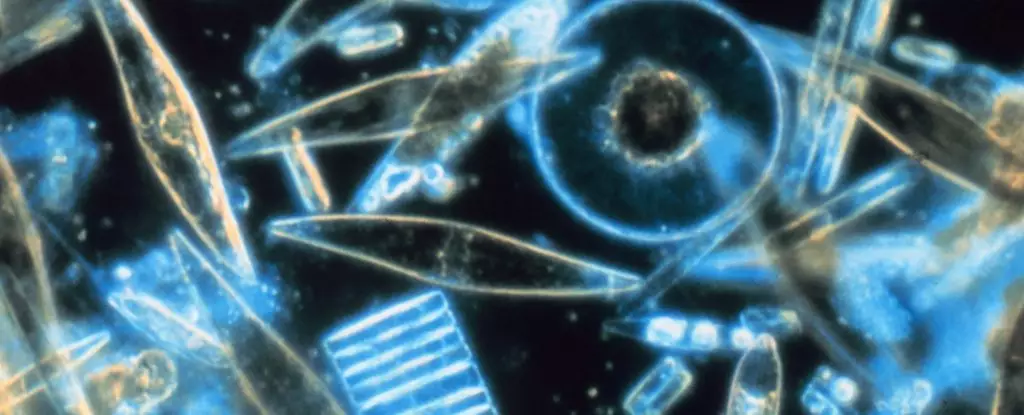For decades, scientists have viewed the southern oceans as frigid, inert regions passive in the fight against climate change. According to prevailing wisdom, these icy waters are too cold to support the phytoplankton species that vigorously extract carbon from the atmosphere, primarily coccolithophores. This assumption has shaped climate models, policy debates, and our understanding of the global carbon cycle. However, recent discoveries threaten to upend these long-held beliefs, demanding a reassessment of how we perceive the ocean’s role in mitigating climate change. The revelation that coccolithophores—the microscopic, calcifying algae—are flourishing further south and in colder waters than previously thought challenges the arrogance of our scientific paradigms. It exposes a dangerous blind spot: the underestimation of nature’s resilience and adaptability.
This isn’t just a scientific curiosity; it’s a wake-up call. If the ocean can harbor vital carbon-absorbing microorganisms in climates previously assumed inhospitable, then climate models that ignore or underestimate their contribution are inherently flawed. This disparity, rooted in the limitations of satellite measurements and superficial assumptions, highlights how human ignorance often lags behind nature’s complexity. The fact that these microorganisms are actively participating in the carbon cycle in the colder depths suggests that climate strategies based solely on land-based or surface oceanic data might be dangerously misguided. We may be relying on incomplete models that grossly underestimate the ocean’s capacity to serve as a climate buffer—or, conversely, its potential to accelerate warming if those natural systems are disrupted.
The implications extend beyond the scientific community. They threaten to undermine global climate policies predicated on control and mitigation, emphasizing the necessity for more nuanced, evidence-based approaches. An underappreciation of the ocean’s biological nuance leads to risky complacency; a misjudgment of its true capacity could spell disaster in our efforts to tame the climate crisis.
The Myth of the ‘Inhospitable Cold’: Why Nature Continually Defies Our Simplifications
The prevailing narrative has long been that life in Antarctica’s vicinity or subpolar regions is limited, fragile, and constrained by extreme cold. For decades, marine ecosystems beyond the Arctic Circle and the Antarctic convergence were dismissed as marginal players in the global carbon cycle. It was widely assumed that the icy conditions curbed the proliferation of phytoplankton, especially calcifying species like coccolithophores. This assumption was reinforced by the difficulty of direct observation in remote, harsh environments, which often left scientists relying heavily on satellite data that could be easily misinterpreted.
Now, however, a combination of modern research vessels and sophisticated measurements paints a more complex picture. The recent foray into icy polar waters by oceanographers aboard the R/V Roger Revelle revealed unexpected biological activity—coccolithophores, once thought to thrive only in temperate, subtropical, and warmer waters, are actively engaging in calcification processes well south of the traditional polar front. This challenges the simplified dichotomy between cold and warm ocean zones and highlights how much we still don’t understand about microbial resilience.
Furthermore, the deeper insights into the optical effects observed in satellite imagery reveal that what was previously attributed to inorganic materials or mere physical phenomena like bubbles or ice may, in fact, involve biological organisms acting in ways we’ve yet to fully grasp. Diatoms, not coccolithophores, seem to be the primary contributors to the reflectance in these cold waters, meaning our methods of measuring and interpreting oceanic biogeochemical activity are fundamentally flawed. This misinterpretation leads to underestimating the contribution of these ecosystems to the global carbon sink capacity.
This revelation underscores that nature’s capacity for adaptation is far more robust than our models account for. The idea that icy, polar regions are biologically sterilized wastelands is naive and dangerous. They are regions of intense, dynamic biological activity—contradicting our ideological comfort zones and demanding a reassessment of climate resilience in these environments.
A Call to Reexamine Our Climate Toolbox: Embracing Complexity and Uncertainty
The essence of this discovery is a reminder that scientific progress often involves confronting our own intellectual limitations. Satellite data, while invaluable, cannot replace the nuance and depth provided by direct oceanic measurements. Yet, too often, policymakers and climate strategists rely on simplified datasets that miss critical biological nuances. This gap between perception and reality risibly undercuts the efficacy of climate action plans, which presume a static or predictable natural environment.
The findings from the southern oceans suggest that our models need an overhaul—incorporating the complex realities of microbial life in extreme environments. Marine biologically-driven carbon sequestration, once thought to be negligible in colder waters, might play a far more significant role than we had imagined, holding the potential to either aid or hinder global efforts to slow climate change depending on how these ecosystems are protected or damaged.
Furthermore, the implications are political as well as scientific. Recognizing the ocean’s underestimated potential as a climate buffer lends weight to advocacy for marine conservation. It spotlights the importance of protecting these fragile ecosystems from the mounting threats of pollution, overfishing, and climate-induced disruptions. For a centrist, centrist-liberal perspective, this means accepting the importance of pragmatic, science-based environmental policies—balancing economic interests with the moral imperative to preserve the natural systems that support life on Earth.
The path forward involves humility and acknowledgment of how much remains unknown. Relying solely on satellite imagery is insufficient; we must invest in comprehensive, multidisciplinary research efforts that embrace the complexity of oceanic ecosystems. Rejecting simplistic narratives, acknowledging uncertainty, and fostering adaptive policies rooted in evolving science are essential. Only then can we genuinely harness—and responsibly respect—the hidden power of the ocean’s cold-hearted resilience in the age of climate upheaval.


Leave a Reply